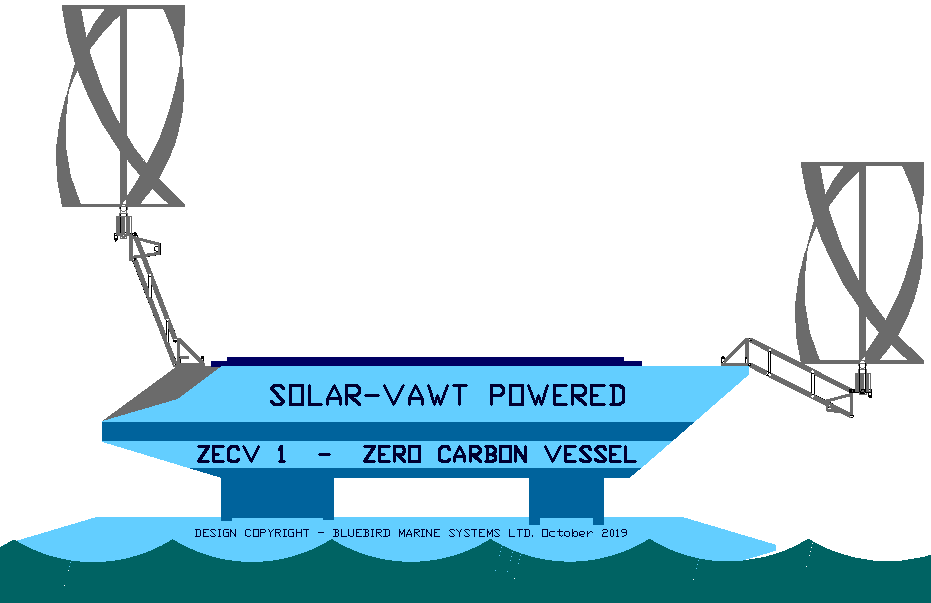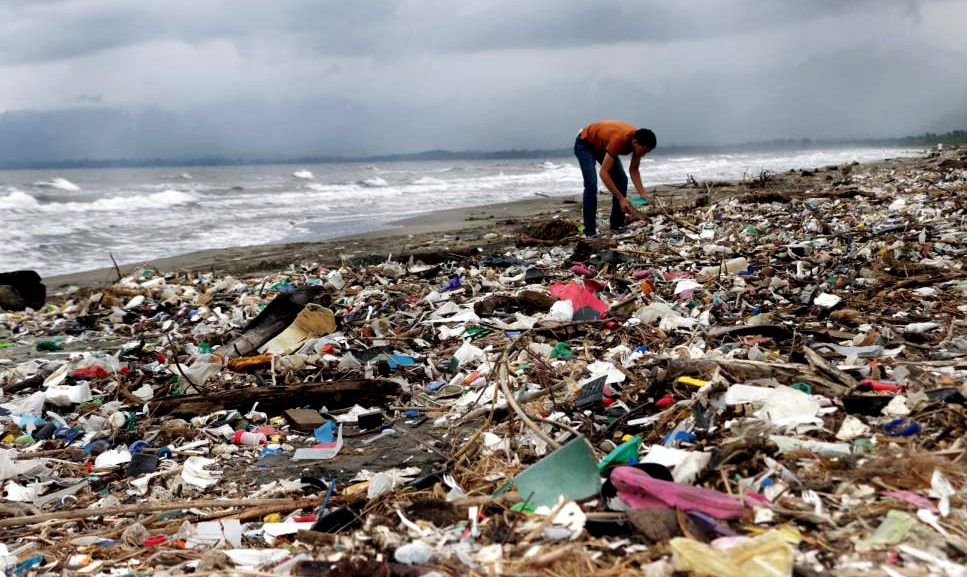|
H2020 WORK PACKAGES 4. SATELLITES
Please use our A-Z INDEX to navigate this site, where page links may lead to other sites
|
||||||||||||||||||||||||||||||||||||||||||||||||||||||||||||||||||||||
|
LITTER CLEANER - This 44m machine is designed to be operated in fleets to target ocean waste in blue water and in rivers. This present proposal is for a pilot derivation of the above machine, limited to around 16 meters in length, with an active cleaning head spanning 6.75 meters. This 1:20 model did not feature moveable wind turbines and the solar wings had limited angular movement. The proposed Pilot vessel will be around 7.5 times the size of this proof of concept machine.
Work Package 4 is the integration of satellite communications into the project where the oceans are vast areas that may be monitored from space more effectively than on or in the water by way of Earth Observation. The aims being:
1. To monitor the navigational position of the cleaning equipment and transmit logging of quantities of collected marine litter linked to geographical coordinates. In the context of this present proposal such geo-data is to be used to monitor marine litter at test site locations.
2. The provision and transmission of information to refine harvesting operations via predictive software based on modeled and satellite-based ocean current estimates, the aim being to enhance cleaning operations where the seas and oceans are vast expanses that defy simple sweeps.
WP 4 looks to the future, where multiples of vessels might operate in coordinated fashion or as cleaning fleets and so benefit from gathered intelligence to enhance cleaning operations significantly.
It is hoped that by utilising existing assets, that next-generation satellites may integrate hi definition sensors for plastic searching, or that existing equipment may be utilized via software upgrades.
This package also involves the transmission of routinely collected marine data via a ferrybox.
COMBINED HARVESTER - This diagram shows the storage chambers, offloading tube extended for dockside transfers and the collector head at three different heights, raised out of the sea for transit, normal operations down to 1 meter, and lowered for microplastics in rivers and shores.
Divided into ten Work Packages (WPs), COFs project structure aims to harness the potential of each individual partner and at the same time promote collaboration within a consortium of expert organizations, while also covering all its research, technology and management objectives.
The lead on WP 4 is by ............. Of ........
PROJECT WORK PACKAGES -
3. PROGRAMMING 7. OPERATIONS 8. RECYCLING
SOLAR VAWT PLATFORM - This 16m (LWL) design features a collecting head approximately 6.75 meters wide and a 20 ton storage capacity. The machine is solar and wind powered for sustainable long endurance tours of duty. In this case featuring vertical axis wind turbines.
TECHNOLOGY SUPPLIERS
SDG 2 Zero Hunger; SDG 6 Clean Water and Sanitation; SDG 8 Inclusive and sustainable economic growth; SDG 9 Sustainable Industrialisation; SDG 11 Sustainable Cities and Communities; SDG 12 Responsible Consumption and Production; SDG 13 Climate Action; SDG 15 Life on Land.
PROBLEM - From 2000 to 2012, the National Marine Fisheries Service reported an average of 11 large whales entangled in ghost nets every year along the US west coast. From 2002 to 2010, 870 nets were recovered in Washington (state) with over 32,000 marine animals trapped inside. Ghost gear is estimated to account for 10% of all marine litter.
LINKS & REFERENCE
http://
COASTAL TOURISM - Beaches like this all over the world tell the story, affecting coastal tourism and killing wildlife.
H2020 WORK PROGRAMME - Pilot action for the removal of marine plastics and litter. Cleaner Ocean Foundation Ltd would be interested in forming or joining a consortium for this call and are currently seeking eligible collaborative partners within and outside of the EU.
| ||||||||||||||||||||||||||||||||||||||||||||||||||||||||||||||||||||||
|
"Be the solution, not the pollution."
ABS - BIOMAGNIFICATION - CANCER - CARRIER BAGS - COTTON BUDS - DDT - FISHING NETS - HEAVY METALS - MARINE LITTER - MICROBEADS MICRO PLASTICS - NYLON - OCEAN GYRES - OCEAN WASTE - PACKAGING - PCBS - PET - PETROLEUM - PLASTIC - PLASTICS - POLYCARBONATE POLYOLEFINS - POLYPROPYLENE - POLYSTYRENE - POLYTHENE - POPS - PVC - SHOES - SINGLE USE - SOUP - STRAWS - WATER
Please use our A-Z INDEX to navigate this site, where page links may lead to other sites
| ||||||||||||||||||||||||||||||||||||||||||||||||||||||||||||||||||||||
|
This website is provided on a free basis as a public information service. copyright © Cleaner Oceans Foundation Ltd (COFL) (Company No: 4674774) 2019. Solar Studios, BN271RF, United Kingdom. COFL is a company without share capital.
|





